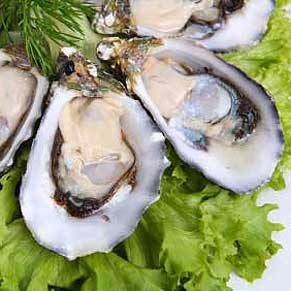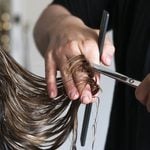Cook for Clearer Skin
Stop popping those pimples! Check out our food prescription to clear your complexion. These days acne is blamed on heredity and hormones, but eating the right foods can make a difference.

Bust out the Brazil Nuts
These are rich in selenium, a powerful antioxidant that appears to help improve acne, probably by protecting cells from inflammatory damage and preserving skin’s elasticity. Selenium works particularly well when it’s accompanied by vitamins E and A, so eat your Brazil nuts with some almonds and perhaps some red bell peppers.
Aim for: One Brazil nut delivers a full day’s supply. Other foods rich in selenium are meats, fish, poultry, onions, garlic, and whole grains.
Look for High Zinc Content
Oysters, beans, poultry, fish, and other foods rich in zinc help put the brakes on breakouts. It seems that zinc helps to control the release of male hormones that kick-start acne. Zinc also helps the body absorb vitamin A, another important nutrient for healthy skin.
Aim for: The recommended amount for men is 11 milligrams; for women, it’s 8 milligrams. Ninety grams of oysters has 30 milligrams of zinc, while the same amount of dark turkey meat has 4 milligrams.
Down Omega-3 Fatty Acids
Dermatologists think that foods rich in omega-3 fatty acids may help keep acne under control. Fatty fish like salmon, sardines, and mackerel all boast omega-3 fatty acids, as do flaxseed and walnuts.
Aim for: At least two servings of fatty fish per week. You can also sprinkle salads with flaxseed oil, use ground flaxseed in baking and smoothies, and add toasted walnuts to casseroles and hot and cold cereals.
Binge on Beta-Carotene
Sweet potatoes, carrots, cantaloupe, bell peppers, and other foods rich in beta-carotene convert to vitamin A in the body, helping enhance selenium’s benefits to skin.
Aim for: At least 1/2 cup (125 milliliters) of red- or yellow-hued vegetables a day.
Enjoy Vitamin E
Almonds, eggs, leafy greens, and other foods rich in vitamin E help skin heal from damage and scarring caused by acne. It’s not easy to get a lot of E from a low-fat diet, but unrefined vegetable oils, nuts, and whole grains are good sources.
Aim for: The recommended daily intake of vitamin E is 15 milligrams. One tablespoon (15 milliliters) of canola oil has 2 milligrams, and 30 grams of almonds has 7 milligrams.
Fill Up on Fruits and Vegetables
When scientists looked at the diets of teens in the Kitavan Islands of New Guinea and the Ache region of Paraguay-where not one case of acne was found-they took note: The diets were rich in fruits and vegetables.
Aim for: At least eight servings a day.
Consume Plenty of Vitamin C
Oranges, tomatoes, melons, and other foods rich in vitamin C won’t cure you of breakouts, but can help protect your skin from scarring that blemishes can cause.
Aim for: Eat enough vitamin C-rich food to total 250 and preferably 500 milligrams of C per day. A half cup (125 milliliters) of raw red bell pepper has 163 milligrams, and 1 cup (250 milliliters) of strawberries has 85.
Off the Menu
Say No to Iodine
For unknown reasons, iodized salt can cause acne flare-ups. Watch the amount of sodium you take in from prepared and processed foods, and how much iodized salt you add from the saltshaker. Consider using sea salt, which is lower in iodine. Also limit shrimp and shellfish, which are high in iodine.
Refuse Refined Foods
If you’re serious about stopping acne, scale back on the “white” foods in your diet-white bread, white flour, mashed potatoes, french fries, and anything made with lots of sugar. They cause blood sugar and insulin to spike, and scientists suspect that those insulin spikes may contribute to acne. Diets full of refined foods and low in fruits and vegetables also come up short on magnesium, a mineral that helps to balance acne-inducing hormones.



